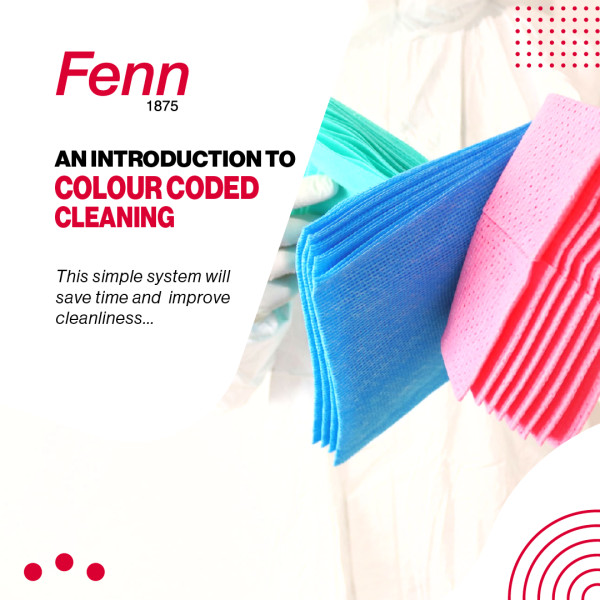Using a colour-coded cleaning system is a simple and effective way to prevent cross-contamination and maintain a safe and hygienic environment in the workplace. It is an essential practice for businesses that need to mitigate cross contamination - already deeply embedded into many outlets in the food, chemical and medical industries.
During the pandemic colour coding was implemented by many offices, shops and other workspaces to mitigate the spread of the virus. In our increasingly health conscious society it’s important to showcase we’re doing everything we can to keep people safe. If you want to follow a system that saves time, improves compliance to industry standards and enhances cleanliness - colour coded cleaning might be for you!
The science behind colour coded cleaning systems
Cross-contamination can occur when bacteria and other harmful microorganisms are transferred from one surface to another, which can lead to illness and other health hazards. This is where a colour-coded cleaning system comes into play.
The aim of a colour-coded cleaning system is to prevent cross-contamination during the cleaning process. For example, if the same mop is used to clean the washroom floor and then used in the food preparation area, it can spread bacteria and other microorganisms. By assigning different colours to different areas, it becomes easy to differentiate and use separate cleaning equipment for each area. This keeps cleanliness levels high and avoids the spread of germs.
What is a colour coded system?
The British Institute of Cleaning Science (BICSc) first developed a universal colour code for the cleaning industry in the late 1990s. The system assigns different colours to different areas, making it easy to identify which cleaning equipment should be used in each area. The following colours are commonly used in the industry:
- Blue: General areas, excluding food preparation areas
- Green: Food preparation areas
- Red: Sanitary appliances and washroom floors
To implement the system, businesses need to assign a different coloured mop to each area, along with a matching colour-coded handle, head and bucket. This system can also be applied to other cleaning equipment, such as cloths, brooms and gloves.
Why does colour coded cleaning benefit businesses?
Using a colour-coded cleaning system offers several benefits for businesses, including:
- Enhanced hygiene: Using separate cleaning equipment for each area reduces the risk of cross-contamination, which can lead to a safer and more hygienic environment.
- Compliance: Adopting a colour-coded system can help businesses comply with regulations and inspections by the Environmental Health Officer (EHO).
- Efficiency: The system can help staff quickly identify which cleaning equipment to use in each area, saving time and making the cleaning process more efficient.
For more information on colour coded cleaning - contact us at This email address is being protected from spambots. You need JavaScript enabled to view it.
